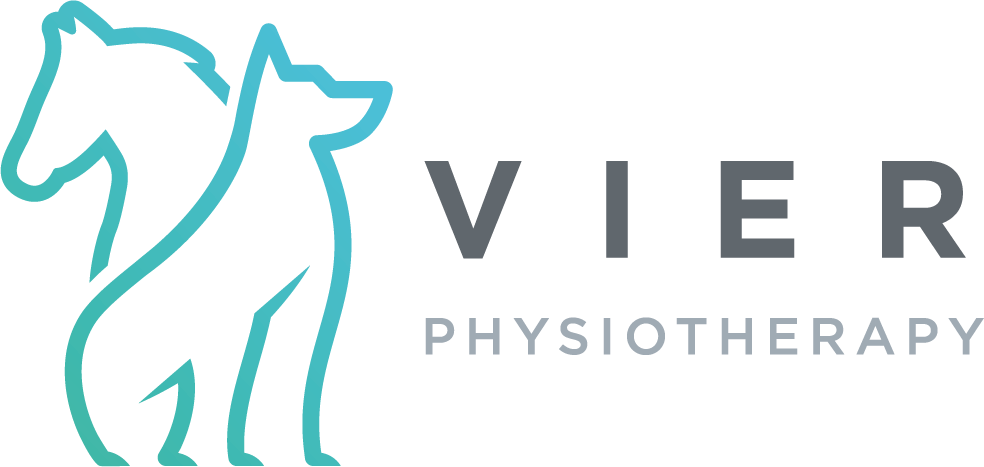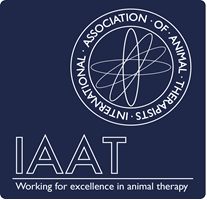Welcome to Vier Animal Physiotherapy
Meeting your animals fitness and rehabilitation needs.
Swimmer Syndrome
What it is
“Swimmer” Syndrome is an uncommon developmental deformity that can occur in newborn dogs. The syndrome primarily affects the hind limbs causing them to splay laterally. This results in the puppies being unable to walk.
The syndrome if considered to have hereditary elements as it is present from birth however signs for the condition aren’t always apparent until the puppy reaches 2 – 3 weeks old when they start to move around and begin to walk. Keeping the Puppies on a slippery surface is known to exacerbate the issues and in some cases is known to cause it.
The hind legs are usually the most affected due to the weakening of the hind limb muscles however the front legs also tend to splay due to the puppy consistently trying to push themselves up and failing.

Symptoms
Characterised with laying flat on their chests, legs splayed out in front and behind the body. The puppies will usually show a desire to get up and walk around however thy will struggle to push themselves up into a standing position, resulting in them “paddling” their legs.
Due to the extended period of time spent on their front, the puppies chest is flat rather than domed, which can cause respiratory issues due to the pressure on their lungs.
Digestive issues can occur, causing the milk to be regurgitated and constipation due to the inadequate diet. You may need to help your puppy go to the toilet and keep them clean as they cannot lift themselves up to squat therefore you may need to support them, clean and dry them as necessary.

Home Care
Ensure that the puppies are kept on a surface that provides friction, so that it is easier for them to gain purchase when they begin to walk. You can also add towels and blankets, which can aid with movement. If keeping puppies on a tiled/slippery surface, use vet bed or off cuts of carpet to help them.
You may need to support your puppy when it needs to go to the toilet as they cannot lift and support themselves. This will prevent them from becoming wet and uncomfortable. You may need to wipe them down/keep them dry to prevent sores from occurring.
When supporting your puppy, minimise the pressure exerted onto the chest by supporting them on their abdomen/lower chest area.
You can administer different techniques of physical therapy yourself to help reduce the symptoms of “Swimmers” syndrome. You can use massage, in a circular motion, to gently put pressure on the chest, encouraging it to take on a more rounded shape and strengthen the chest muscles. This should be done every day and will increase the puppy’s ability to control their fore limbs.
You can use massage on both the hind and forelimbs, still with a gentle circular motion, over the shoulder and hip muscles. This again will encourage blood flow to that area, strengthening the muscles and bringing fresh nutrients and oxygen, preventing the muscle from wasting due to lack of use. Keeping these muscles strong and supple will enable the puppy to better support itself so it can begin to stand and walk.
You can use hydrotherapy as a form of rehabilitation and this can be done by supporting your puppy in the bath, providing they don’t become too distressed. The swim reflex does not tend to come in until the puppy is around 6 weeks of age therefore it is best to wait until the puppy is older to try this.
You can use basic exercise therapy and support your puppy in a standing position for a couple of seconds each day. You need to make sure that the legs are under the body in a natural stance to enable the muscles to develop and build strength effectively.
For best results these actions should be performed throughout the day, with physiotherapy sessions to check progress once a week, more if possible. Always check with your vet, before starting any of the techniques mentioned above.
Physiotherapy benefits
Veterinary Physiotherapists can design a tailored plan, specific to your puppies needs, developing the plan as the puppy progresses.
Physiotherapists can monitor progress, develop the rehabilitation plan and offer advice where needed.
They can implement methods, such as the use of machines to help support recovery.
They can implement methods that will strengthen the muscles in the limbs and chest, increasing the overall health development of the muscles. Healthy, strong muscles will help to support the joints, enabling the puppy to stand and walk.
Range of motion exercises are carried out to ensure the joints develop correctly , supporting the puppy and enabling correct range of motion as the puppy grows and develops.



